Looking for the Xia Chao: The password of the Erlitou site
Author:China Newspaper Time:2022.07.14

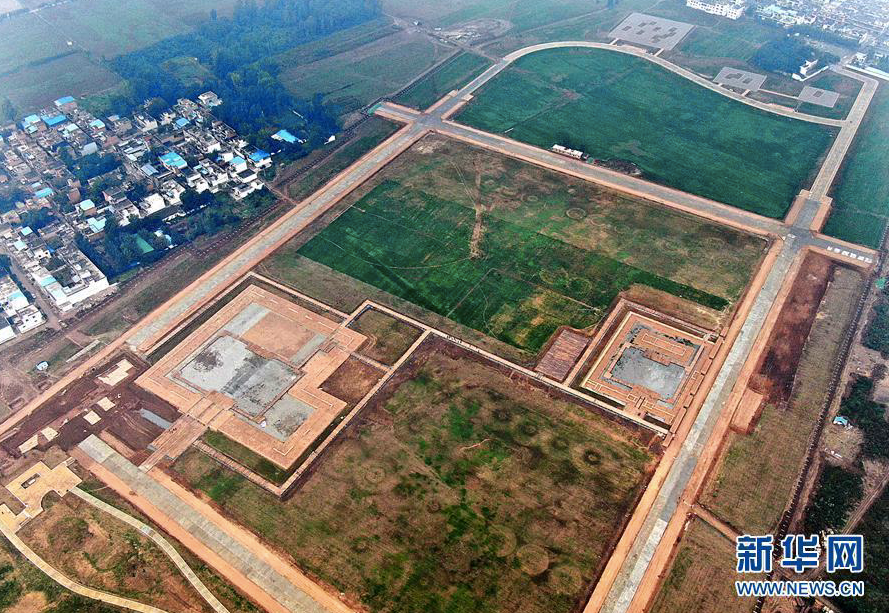
△ Erlitou site in Yanshi, Henan.
"Does the Xia Dynasty exist?" For decades, this is a problem that has always troubled in the archeological community.
Despite the records of Chinese historical documents, it is called the first hereditary dynasty; the pre -Qin Dynasty's "Book of Songs" and the Western Han Dynasty "Historical Records" and many other classics are also ranked first in the "three generations". Different from the Shang Dynasty with Oracle and Yin Ruins as the history of Xinxin, the Xia Dynasty, which still lacks internal text materials in the field of archeological research, has never been fully recognized by the academic community.
Erli, Henan Yanshi, has discovered early sites such as the earliest known and recognized China in China in the excavation of archeologists and the earliest urban cadres network. The compatibility of the Erlitou site and the Xia Dynasty in time, geographical location and other factors also provided a basis for the academic community. Although there is still controversy, Erli "is likely to be Xiadu" is the consensus of the academic community.
Zhao Haitao, an associate researcher at the Institute of Archeology of the Chinese Academy of Social Sciences, is the current captain of the Archaeological Team of Eryou. When talking to the reporter of "China Report", Zhao Haitao bluntly stated that there is no need to entangle in the question of "whether the Xia Dynasty exists" or "whether the two miles are the Xia Dynasty". In his opinion, the most important thing for studying the summer problem is that they cannot be rushed to achieve success. It should be more comprehensive and in -depth from archeological tips to study, interpret and interpret it from archeological tips. Learn and restore social life at that time.
The key "breakthrough"

When it comes to Erli, Xu Xusheng cannot be around. He is a well -known archeologist and the first discoverer of the Erlitou site.
"Historical Records of Xia Benji" clearly records that the Xia Dynasty's total of 17 emperors from Yu to Yu, and the story of "Dayu's Water" has also been circulated for several years. However, the "Historical Records" has been discounted by the Xia Dynasty, and its credibility has been discounted. In the field of archeological research, there is still certain controversy on the evidence of the Xia Dynasty.
In the 1950s, Xu Xusheng, a researcher at the Institute of Archeology of the Chinese Academy of Sciences (now the Chinese Academy of Social Sciences), began the collection of clues of the Xia Dynasty. He decided to find the existence of the Xia Dynasty from the perspective of archeology.
In 1959, after entering the summer, Xu Xusheng, who was 71 years old, led a team to go from Beijing to the western Henan area to find "Xiaxu". Dengfeng, Yuzhou, Gongyi, Yanshi and other places in Henan Province are the destinations of a group of people. When he arrived at Erlitou Village of Yanshi, Xu Xusheng accidentally discovered that the villagers who were calling for digging fish ponds in response to the village dug a large number of pottery slices. Among these pottery films, "there are many early Yin (Shang) ones." Xu Xusheng infer that there may be a site of ancient capitals here. At the end of a month of inspection, the team discovered more than 20 sites.
After returning to Beijing, Xu Xusheng wrote the famous "Preliminary Report on the Summer Henan Investigation" in the Summer Henan in 1959, and emphasized the importance of the ruins such as Chengcheng and Erlou. This is the breakthrough progress of the summer culture and archeological work.
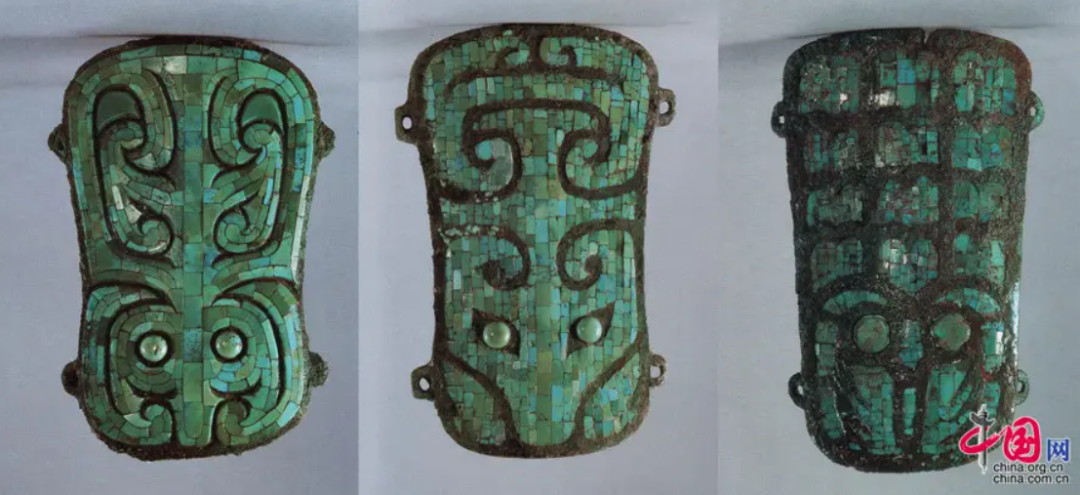
△ Henan Yanshi Erlitou site was inlaid with green copper trim.
The results of Xu Xusheng's inspection have aroused the attention of the academic community. Previously, the simple village Erli also became the "Erlou site" in the history of archeology. The advent of the Erlitou site excited archeologists. Looking for the Xia Dynasty was another goal after confirming the Shang Dynasty, and Erlitou was likely to approach the breakthrough of the Xia Dynasty.
In the fall of 1959, the work team of the Institute of Archeology of the Chinese Academy of Sciences entered Erli and began the excavation of the Erlitou site. In the past 60 years, the field excavation work in the Erlitou site has continued. The first captain Zhao Zhiquan, the second captain Zheng Guang, and the third captain Xu Hong, and hundreds of archeologists have relayed here to unveil the suspicion of "Erlitou Culture" and "Erli Period". In the process, the discovery results of large -scale palace buildings, bronze workshops, and green pine workshops provided an important basis for the exploration of Xia culture. Xia Chaozheng was transformed from the legend to a real, touching history.
In 1960, the second year of archeological work of Erlitou started, archeologists discovered and tried here the base address called "Palace 1". According to the later introduction of the third captain Xu Hong, the palace was the title of large -scale buildings, and there was no unified use of the use, but it was certain that it was an important building used for the ruling class at that time.
Professor Ailan, a Sinologist in the United States, pointed out that the entire Chinese bronze civilization from Erlitou to Zhou Dynasty, from the activity of rituals, etiquette (ancestors) to the "ritual" on the ritual, whether it is the utensil culture at the level of the instrumental organs or the aristocratic culture of the aristocratic culture. The heritage is consistent.
Xu Hong said that one of the most important achievements of the first generation of archaeologists in Erli is that the two miles are a capital site, and the tombs that are unearthed into a group of bronze rituals and jade in Erlitou also explained here.
The capital with "dynasty weather"

In the spring of 2002, when the green bronze bell was first seen, Xu Hong and the other players of the team were surprised. Following the clues down, a green pine dragon body with a bright color and bright color appears. The 64.5 cm dragon body, the diamond -shaped scales composed of green pine chips, the garlic nose carved by the turquoise ... lifelike lifelong nose ... lifelike life The "Dragon" excites the archeological community -this large green pine dragon shape that is around 3700 years is unique in the early dragon image of China.
Not only this "dragon" that can be called national treasure -level cultural relics, Zhao Haitao told reporters that many of the "earliest China" presented by the two miles of palace buildings and the overall layout of the capital, showing many factors that have no ancient people. Zhao Haitao is the current captain of the Archaeological Team of Eryou, and the fourth captain of the work team. In 2002, as soon as the master's dissertation defense ended, he should come to Erlou to participate in archeological excavation at the invitation of the team captain Xu Hongzhi at the time. △ The green pine dragon shape unearthed from the Erlitou site in Yanshi, Henan.
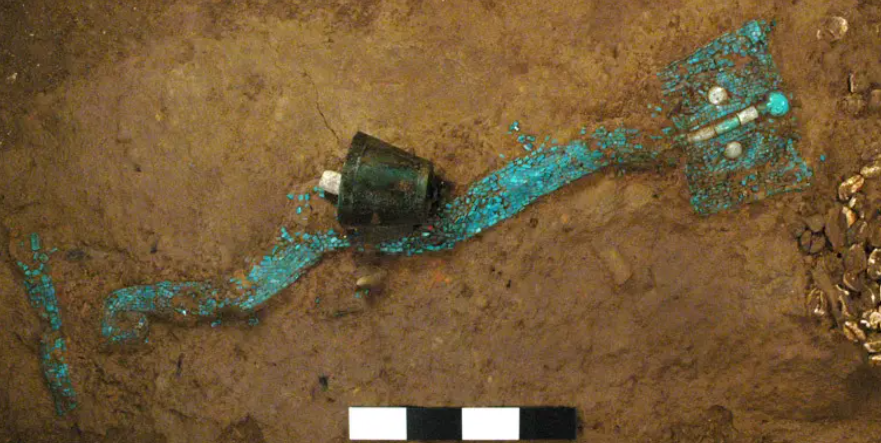
Zhao Haitao introduced that the team discovered that there were at least two vertical and two horizontal roads in the central area of the Erlitou site, and each road was 10-20 meters wide. They are staggered, and they are in a formal and regular "well" shape. This road network not only connects traffic, but also divides Miyagi to different functional areas.
Zhao Haitao explained to the reporter of "China News" that the rigorous and orderly planning layout of the "well" shape of the "well" shape in the central area shows that the social structure was clear and the level was obvious at that time. Systems and models are the most important symbols to enter the dynasty country.
In the spring of 2003, Xu Hong, Zhao Haitao and colleagues finally found the complete Miyagi wall on the inside of the "well" avenue. The site palace area is a concentrated area of the base site of large and medium -sized rammed earth buildings known to be known. In the city, there are two groups of palace buildings in the north and south of the north, and the middle axis is surrounded by the palace wall. There is also a double -wheeled mark with east -west and width of 1 meter on the "Jing" avenue.
The large -scale and orderly arranged building complex often shows the high concentration of political and religious power. Xu Hong described this palace city as "China's earliest Forbidden City". In Xu Hong's words, Erlitou Gongcheng was verified by "want" through academic design. During college, he heard Professor Su Bingqi taught, "In archeological work, you can only encounter what you think of."
Xu Hong said that before the Gongcheng City of Erlitou, the Duyi ruins excavated in the archeological excavation were not required to be positive and adapt to local conditions. Although the area of Miyama City is only one -seventh of the Forbidden City of the Ming and Qing Dynasties, it is the beginning of the quality of Miyagi in history.
△ Yu Ge unearthed from the Erlitou site.
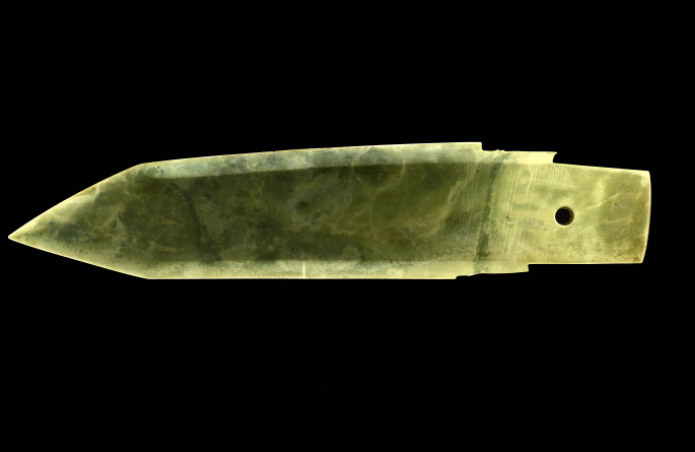
In subsequent research, several researchers also believed that the Erlitou site was an unprecedented dynasty capital site. The emergence of Erlitou Wangdu opened a prelude to the highly developed and prosperous Shangzhou Bronze Rites and Music System and the Kingdom Civilization, laying the most important foundation. The palace represented by Founder and large rammed soil bases, the tomb system displayed by the tombs at all levels represented by medium -sized tombs, is represented by the earliest bronze ritual group, turquoise dragon shape and other relics. All archeological consensus, that is, the court ritual and ritual and music system that represents the development of ancient Chinese political civilization has formed.
Xu Hong concluded in the book "The earliest China" that the Erlitou site represented the capital of China and even East Asia. The Erlitou culture is also the earliest core culture of East Asia. Xu Hong believes that this is "the earliest China".
After the "earliest China", the more popular point of view of the academic community was that Erlitou culture radiated the cultural influence towards the Quartet, and Chinese history was able to enter the era of unique and integrated development from the state of the State of Wanbanglin and diverse competition.
In the expression of Zhao Hui, vice chairman of the Chinese Archaeological Society and a professor at the Peking University Archaeological Board Institute, before the emergence of Erlitou culture, many bright culture appeared on the Chinese land, such as the Tao Temple culture in Jinnan, Liangzhu in the Yangtze River Basin Culture, Longshan culture in Shandong ... that is the "ancient country" of Wanlinli and the star fighting.
"Erlitou culture stands out, forming a more mature civilization form, successfully completed the evolution from the ancient country to the kingdom, and the Central Plains has gradually formed a 'one -one dynasty'. The summary is also the beginning of the "Kingdom Times". "Zhao Hui pointed out.
Zhao Haitao also told the reporter of "China News" that Erlitou Culture opened the prelude to Xia, Shang and Zhou Bronze Rites and Dynasties civilization, laid the foundation for a highly developed and prosperous business and Zhou civilization, and made it with the civilization of Shang and Zhou. The mainstream of the development of civilization has established the basic characteristics of Chinese civilization.
"It is likely to be Xia Du"
So far, Erlitou's excavation work has shown an unprecedented great creation in Erli in the academic community. Its "dynasty weather" has also been inherited in the development of the Chinese regime in the early days.

In archeology, the direct evidence that can prove that the DPRK exists is text. Oracle discovered by Yin Ruins in Anyang confirmed the Shang Dynasty recorded by the "Historical Records of Yin Benji" as a letter history. Only then did it establish Yin Shang civilization in archeology.
During the interview, Zhao Haitao explained that in the literature of the Zhou Dynasty, the Central Plains was called "Xia" earlier than the Shang Dynasty. Archaeological discovery and research have proved that from 1750 BC to 1520 BC, there was a powerful and developed dynasty country with the Central Plains region centered on the Luoyang Basin. Therefore, under the existing conditions, Xiadu and Xia Culture are the best historical attributes of the Elitou site and Erlitou culture.
The questioner who belongs to Xia's issue of Xia He believes that to prove the existence of the Xia Dynasty, you must rely on direct text materials to evidence. Zhao Haitao told the reporter of the China News that the Erlitou era was the "original history" stage in archeology, that is, its own writing system has not developed during a period, and can only be recorded by other external civilizations in local text. At present, in the excavation of Erli, only the excavated symbols that may be related to text on the unearthed pottery and boneware have not yet formed a mature text system like Yinxu Oracle. In 1996, the State Council began to launch a major scientific research project "Xia, Shang and Zhou Dynasties Project", and the project mobilized the research force of multiple disciplines such as astronomy, archeology, history, and ancient text. , Pushed the three generations of ancient ancient research to a climax. However, due to the vagueness of the Xia Dai years and the differences between scholars' judgment, this project has not yet issued a "complicated" report.
From the perspective of most researchers, after many parties such as the age, region, social development, cultural characteristics, etc., the Erlitou site is the capital of the middle and late Xia Dynasty, and the culture of Erlitou is the summer culture. This is also the general "consensus" of the academic circles for Erlitou and Xia.
△ Milk nail pattern bronze unearthed from Erli.
In the historical research, more than 200 years of two -year culture was divided into one, two, three, and fourth. Some people once divided the four phases into two, the first paragraph was summer, and the later paragraph was a business. In Zhao Haitao's research conclusion, Xia Shang's boundary point was at the end of the evening of the fourth phase of Erlitou Culture. Li Boqian, a well -known archeologist, also agreed with this judgment.
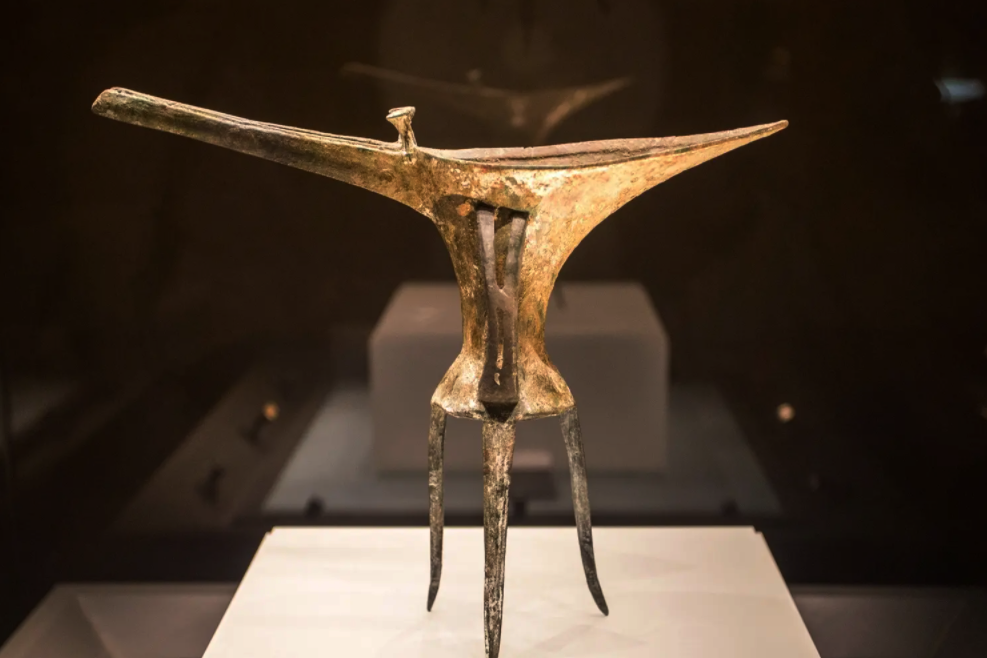
Zhao Haitao used a more rigorous expression to reporters: "Erlitou is likely to be Xia Du." He admits that the reason why the academic community has the judgment of Xiadu is mainly based on scientific considerations in three aspects. The first is to determine the relative ages of Erlitou through archeological strata learning and type. In order to compare with the mid -to -late period of the Xia Dynasty, which is recorded by 3750-3520); in addition, the location of the Erlitou site is the west of Henan Province, which is also in line with the main event area of the Xia Dynasty recorded in the history book.
The current area of the Erlitou site has an area of about 3 million square meters. The relay team of the four captains has excavated for 62 years, and only 1.7%of the total area was excavated. Zhao Haitao admits that it takes more than 3,000 years to complete the current excavation speed. "The excavation of the second mile is a long -term plan." Zhao Haitao said that although the current archaeological excavation of Erlitou has achieved significant gains, there are still many topics to be discovered and in -depth research.
Zhao Haitao pointed out to reporters that Erlitou has entered the stage of dynasty civilization. It is the most important starting point and ruler of the issue of the origin of Chinese civilization. The emergence of Erlitou Wangdu and its extensive cultural influence fully illustrate that Erlou is the core and leader of Chinese civilization. It is an important manifestation of the diversification of Chinese civilization, harvesting, and continuously.
"Archeology is like solving the case." In his opinion, there is no need to rush to set the theory of belonging to Erli. Instead, I should take Erli as an example to have a deeper and detailed inquiry about the layout and evolution process of the capital to understand the characteristics of the king's rights and development at that time.
Written: "China News" reporter Qiu Hui
Picture source: Xinhua News Agency, China Net

Responsible: Xu Hao
- END -
Knowing thousands of years · Zhang Xianshu Guang 丨 Hangzhou Xiaoshan Shushan This event is quite ancient
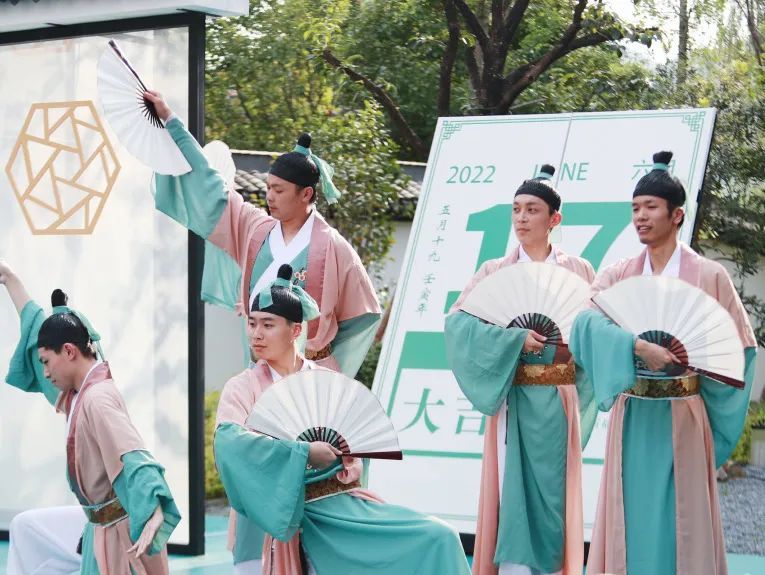
Knowing the millennium show Shu GuangIn order to further spread the culture of Zhi...
Write a song, for the favorite Peking University

The years are silent, youth is flowingIn this gardenWe are happy, intoxicated, loo...